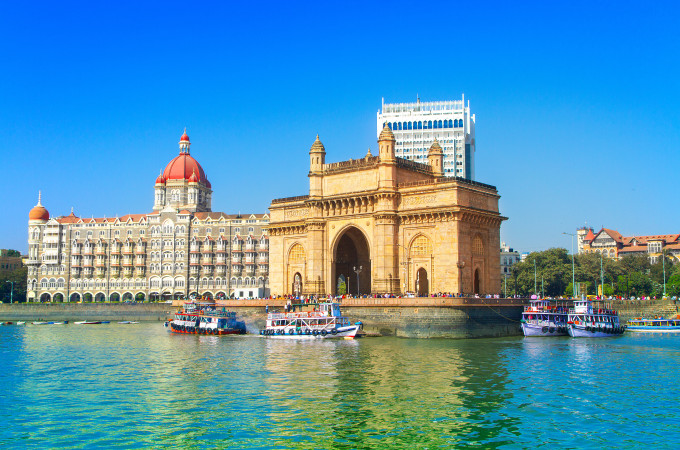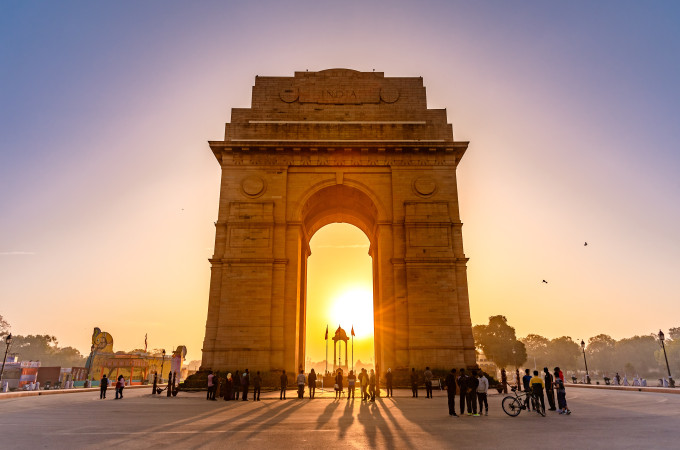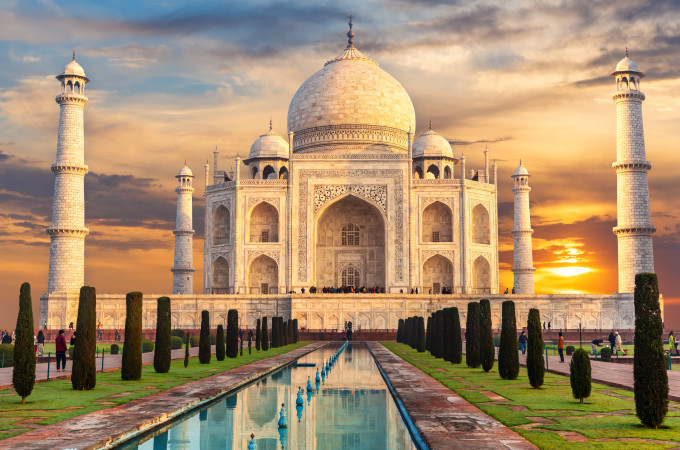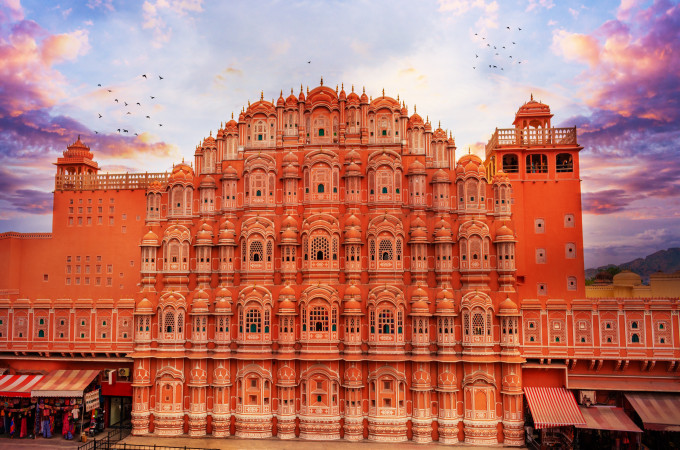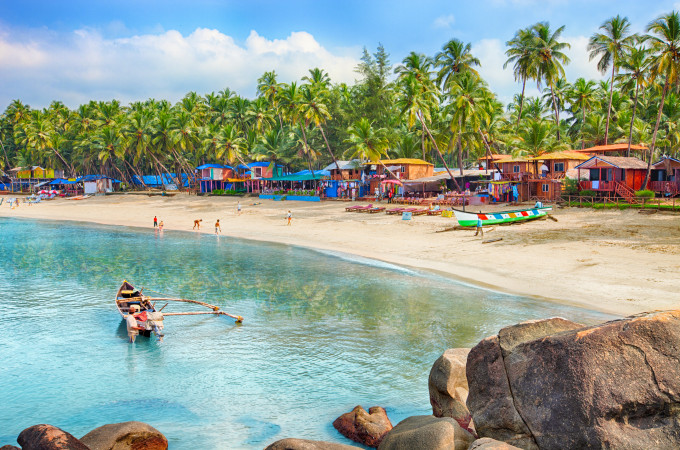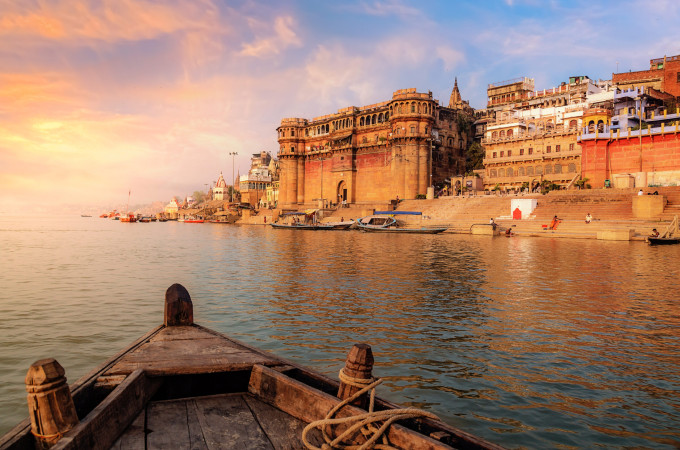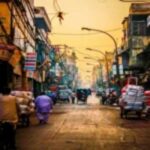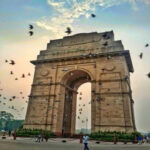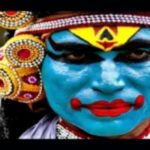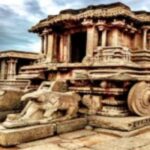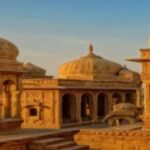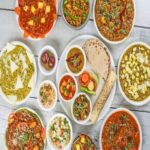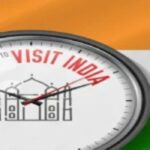India is an ancient land of rich cultures and heritage,
Spiritual and religious traditions, scriptures and mythologies, civilization and history and tradition and continuity. Indian festivals are a celebration of all of these things.
Marked by spirited activities, passionate rituals, elaborate ceremonies and unbridled merrymaking, India’s religious and cultural festivals are flamboyant and exciting events that play a vital role in bringing people together, preserving cultural heritage, and forging bonds of community.
Typically, festivals mark religious, cultural, mythological and national events, and are celebrated with tremendous zeal and zest.
If you are planning on traveling to India, it is always a good idea to make note of the religious or cultural festivals that may correspond to the time of the year that you are looking to visit.
These festivals are the quintessential Indian cultural immersion and a fantastic opportunity to witness, relish and partake in an authentic Indian experience.
Here is our comprehensive list of the “Top 10 Festivals in India” along with their cultural context and historical significance.
1. DIWALI: THE FESTIVAL OF LIGHTS
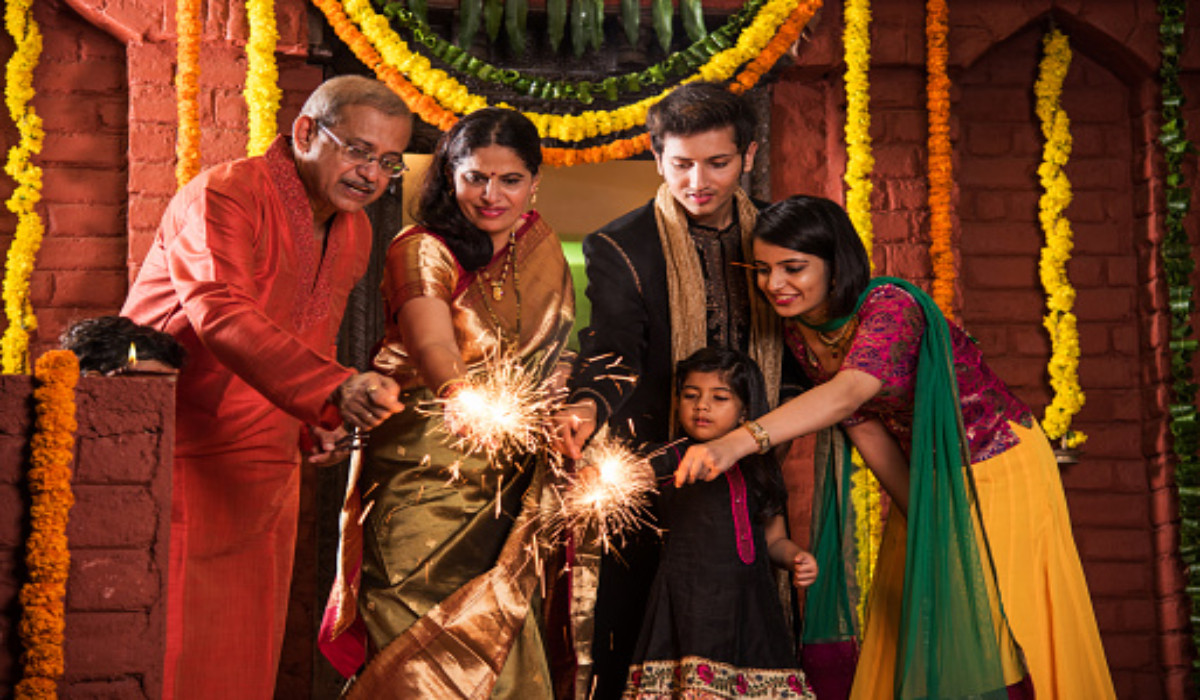
Also known as Deepavali, the Festival of Lights Diwali celebrates the triumph of light over darkness, good over evil and knowledge over ignorance.
Celebrated during the Hindu lunisolar months of Kartika (usually between mid-October and mid-November), it lasts five to six days and is considered one of Hinduism’s primary religious festivals.
Oil lamps called “Diya” are lit during Diwali and homes are decorated with colorful Rangoli patterns to welcome the goddess of wealth, Lakshmi, to the houses.
According to the Hindu myth, when Lord Rama, accompanied by his wife Sita and brother Lakshmana, returned triumphant after a 14-year-long absence to the Kingdom of Ayodhya after defeating the demon king Ravana, the people of Ayodhya gave him a hero’s welcome by lighting lamps to illuminate his path.
Lord Rama is at the center of all Diwali celebrations in India, however, in some parts of India, Lakshmi, the goddess of wealth, the goddess Kali and the god Ganesh, the god of wisdom and remover of obstacles are also worshipped, in addition to Lord Rama.
Other Indian religions celebrate their respective versions of Diwali. The Jains celebrate Diwali to mark the final liberation of Mahavira and the Sikhs celebrate the Bandhi Chhor Divas to mark the liberation of Guru Gobind Singh from Mughal imprisonment.
Newar Buddhists celebrate Diwali to worship the goddess, Lakshmi, whereas some Hindus of Bangladesh and East India worship the goddess, Kali.
Diwali is a great time to visit India. The mood in the country is festive. Houses are decorated with clay lamps, Rangoli patterns, candles and Ashok leaves.
Everyone wears new clothes, prayers (puja) ceremonies are held at homes, sweets are shared with loved ones, and food is served to guests, neighbors and the community.
The Best Places to Celebrate Diwali
Diwali is to India what Christmas is to the Western Hemisphere. It is celebrated throughout India with great enthusiasm and excitement. However, North India (especially Jaipur, Udaipur, Amritsar, and Varanasi) are particularly famous for their Diwali celebrations. In the South of India, Madurai (Tamil Nadu), Mysore (Karnataka), and Kolkata are the best places to enjoy Diwali.
2. HOLI: THE FESTIVAL OF COLORS
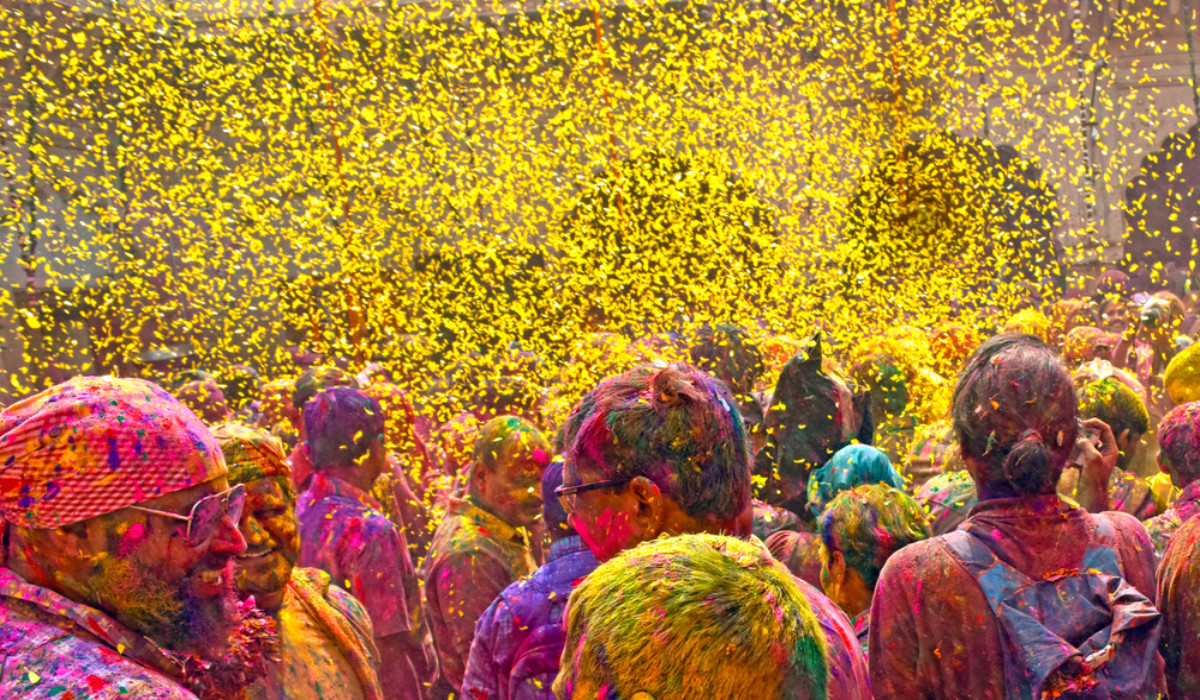
Holi, which celebrates the arrival of spring, is a festival of colors and love and a celebration of good over evil.
It celebrates the divine love story of the god Krishna and the goddess Radha and also marks the triumph of Lord Krishna over Hiranyakaship.
This centuries-old cultural festival which is celebrated following the end of winter and at the start of the spring season is an invocation for a good harvest season.
Typically, Holi falls around March in the Gregorian calendar and is celebrated on the evening of the full moon day (Purnima) of the month of Phalguna as per the Hindu calendar. Holi is all about merrymaking and joy. People greet each other by smearing colored powder called Gulal on the cheeks of each other.
The night before the main day of Holi, people gather around a lit bonfire meant to symbolize the triumph of good over evil.
Known as “Holika Dahan” or “Chhoti Holi” (the small Holi), various rituals are performed on this night to honor the goddess Holika who attempted to kill Prahlada, son of the villain of the myth Hiranyakaship by throwing flame balls at him.
The main day of Holi is called Rang wali Holi (the Holi of colors) or Dhulendii where people smear and throw color at each other. There is a lot of singing, dancing, and playing drums. People visit their family, elders, neighbors, friends and community.
Originally a religious festival, Holi is also a major cultural event in the Indian subcontinent.
It is a national holiday in India, Nepal and a regional holiday in some other parts of South East Asia. It is a day to bury hatchets, put an end to animosity, end conflict by meeting others, spread joy and a day to forgive and forget.
The Best Places to Celebrate Holi in India
The best places to celebrate Holi in India are Jaipur (where the Tourism Department and civil society organize special events to mark the occasion), Delhi, Varanasi, Ahmadabad Udaipur, and Uttarakhand.
However, the one place we particularly recommend is the town of Mathura in Uttar Pradesh, where the festivities go on for 14 days.
Believed to be the birthplace of Lord Krishna, the town is flocked by devotees of Krishna around this time of the year. The celebrations are grandiose and spectacular.
3. DUSSEHRA: THE TRIUMPH OF GOOD OVER EVIL
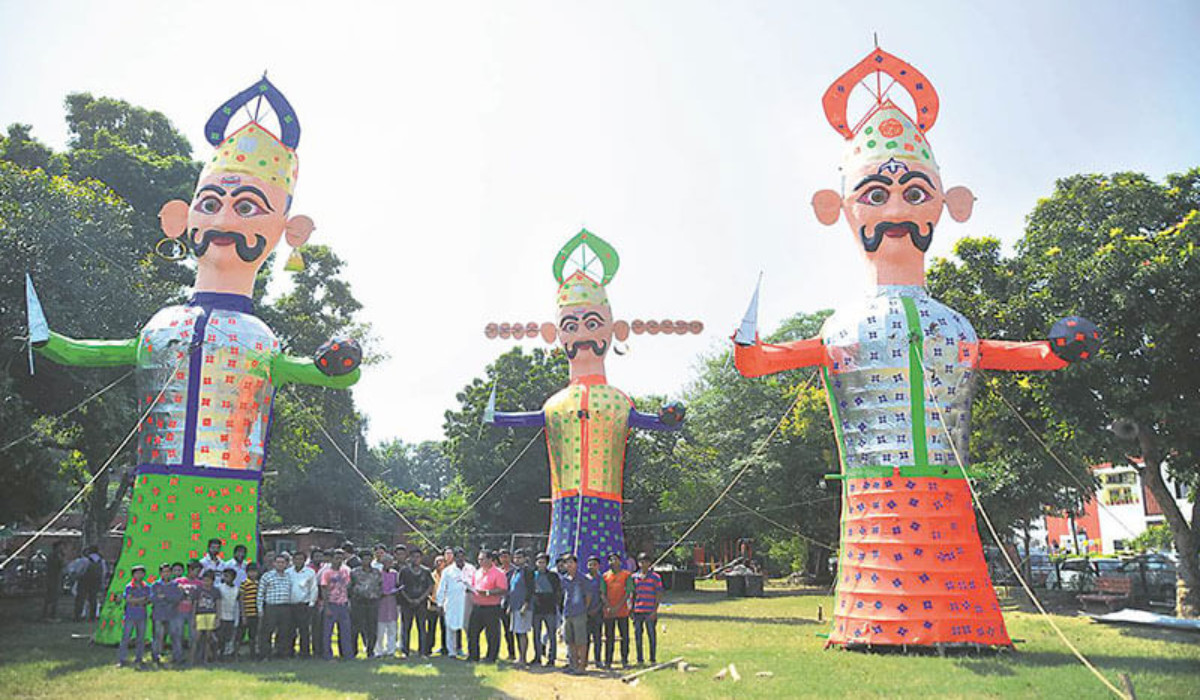
Also known as Vijayadashami, Dasara or Dashain, Dussehra is a very significant Hindu religious festival that climaxes on the 10th day of the month of Ashwin—the seventh month of the Hindu Luni-solar calendar.
The 10-day-long Dussehra is celebrated across India in various versions and forms and is known by different names in different parts and regions of India.
Generally, Ashwin falls in the fall season in the months of September and October. “Vijaya” is Sanskrit for victory, where “Dassama” means ‘the 10th’—the victory of the 10th day (of Ashwin).
In the northern region of India, Vijayadashami (Dussehra) is associated with Lord Rama, and Ramlila (a dramatic reenactment of the story of Rama) is performed over the 9 days leading up to the climax of the celebrations on the 10th day.
Effigies of the demons Ravana, Kumbhakarna, and Meghanada are burnt on bonfires in the evening. UNESCO has incorporated the performance arts tradition of Dussehra as the “Intangible Cultural Heritage of Humanity.”
In the south of India, Vijayadashami is celebrated in a variety of ways and the city of Mysore is the epicenter of the celebrations. Temples, major forts and historical buildings are lit up in bright colors.
While Durga remains the primary deity at the center of the festivity, in some parts the goddess Saraswati, the goddess of knowledge, is also honored.
The highlight of Dusshera events is the grand processions that take place where giant statues of the Goddess Durga are carried with tremendous pomp and accompanied by traditional music and dances.
In some parts of India, idols of Lord Rama, Sita, Lakshmana and Hanuman are also carried out in the processions.
The Best Places to Dussehra Holi in India
The best places to celebrate Dussehra are Agra and Delhi, where extravagant dramatic reenactments of Ramlila (the love story of Ram and Lila) are performed in huge processions.
Gujrat in West India, Mysore (Karnataka) in South India, and Kolkata in Eastern India are also awesome places to enjoy the celebrations.
4. EID-UL-FITR
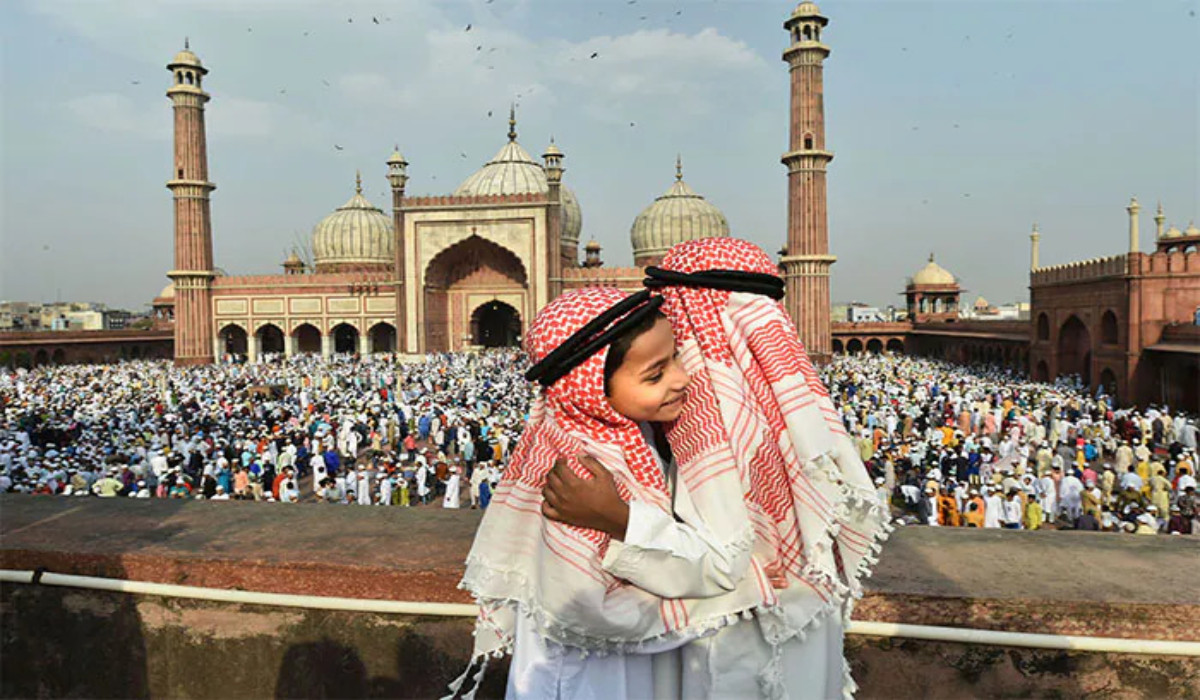
The Eid-ul-Fitr (‘the Holiday of Breaking of the Fast’) marks the end of the month-long dawn-to-dusk Ramadan fasting in the Islamic tradition. It is one of the two main religious celebrations in Islam—the other being Eid-Al-Adha.
As per the 2011 census of India, there are approximately 172.2 million Muslims in India, 14.2% of the total population, making Islam the second biggest religion in the country, and the third largest population of Muslims in the world, after Indonesia and Pakistan.
Celebrated with tremendous fervor and zeal, Eid-ul-Fitr is marked by three days of feasting, charity, prayers and community bonding.
It follows the holy month of Ramadan and is celebrated on the first day of the month of Shawal.
People put on their best clothes and meet and greet family, friends, neighbors and the community. Sweets are distributed among friends and relatives and the entire community gathers in the Jamia Masjids (grand mosques) of the city to offer the Eid prayer together.
Eid is a time of the year to form community bonds, forgive old grudges and come together as a people.
The Best Places to Celebrate Eid in India
The best places to celebrate India are Hyderabad (Telangana) and Lucknow (Utter Pradesh) and Srinagar in Jammu and Kashmir (North India).
5. NAVRATRI: THE FESTIVAL OF 9 NIGHTS
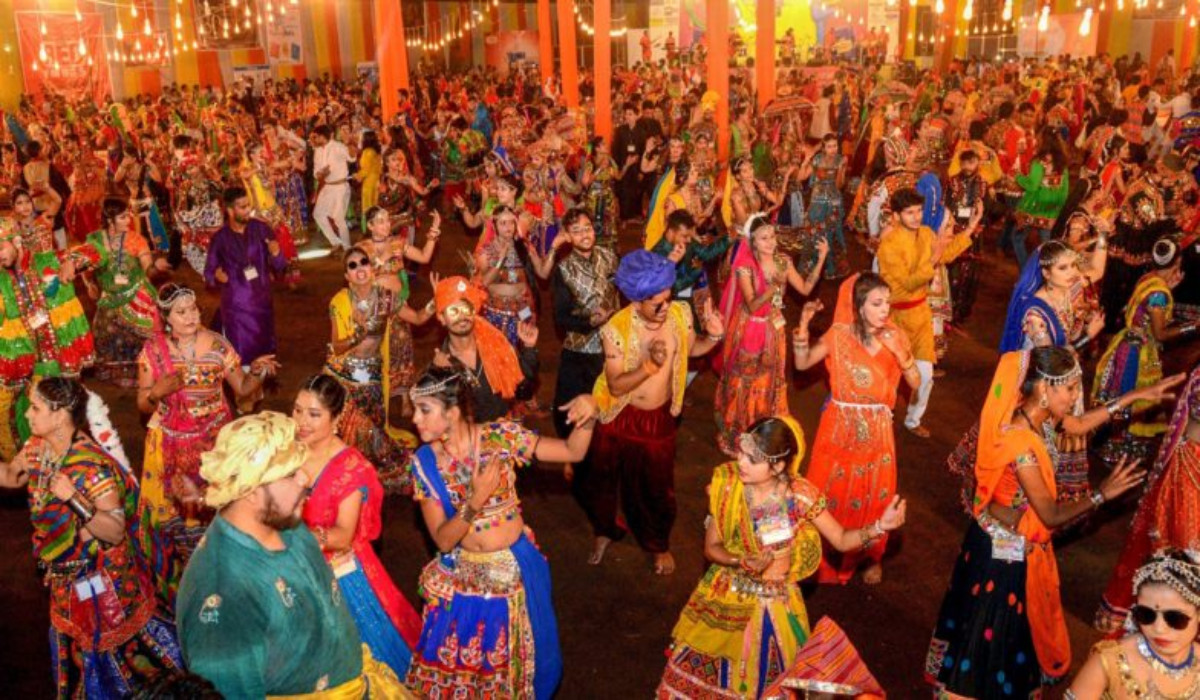
Two Sanskrit words (‘Nav’, meaning nine and ‘Ratri’ meaning) form the word Navaratri (Navratri), the 9-nights-10 days-long Hindu festival in honor of the goddess Durga.
It is also known as Adi Parashakti in some parts of India. It is celebrated twice in the autumn month of Ashwin (September-October) and Chaitra (March-April) as per the Hindu Luni-solar calendar.
The Autumn celebration is known as Sharad Navaratri and the Spring celebration is known as Vasant Navaratri.
Associated with protection, strength, destruction, motherhood and wars the goddess Durga is a multi-dimensional and charismatic deity and each day of the Navaratri celebrates one aspect of her divine femininity. The blessing of Durga Maa is invoked through prayers, rituals and celebrations.
While the ways in which the festival is celebrated vary in different parts of India, one theme that is common throughout is fasting as a form of cleansing and penance. Another common theme is traditional dances known as “Garba” and “Dandiya Raas.” Western states of India, in particular, Gujarat, Rajasthan, and Maharashtra are famed for their Navaratri celebrations. These dances are performed in large groups accompanied by rhythmic music and drumming.
In the south of India, Navaratri is celebrated by arranging dolls and figurines on decorated steps. This is called “Golu” or “Bommai Kolu,” and is a huge hit with the children who visit each other’s homes to see the Golus.
The Golus typically showcase events and stories from ancient scriptures and myths. Gujarat in the West for the Autumn Navaratri, and Tamil Nadu (Meenakshi temple in Madurai) for the Spring Navaratri are great options to witness this cultural spectacle.
The Best Places to Celebrate Navratri in India
The one Indian state that stands out for its celebrations of Navratri is Gujrat. Therefore, best place to be is anywhere in Gujarat. We recommend the capital Ahmedabad and the towns of Vadodara and Surat.
Elsewhere in India, the best places to enjoy Navratri are Mumbai and Kolkata.
6. GANESH CHATURTHI: CELEBRATING THE ELEPHANT GOD
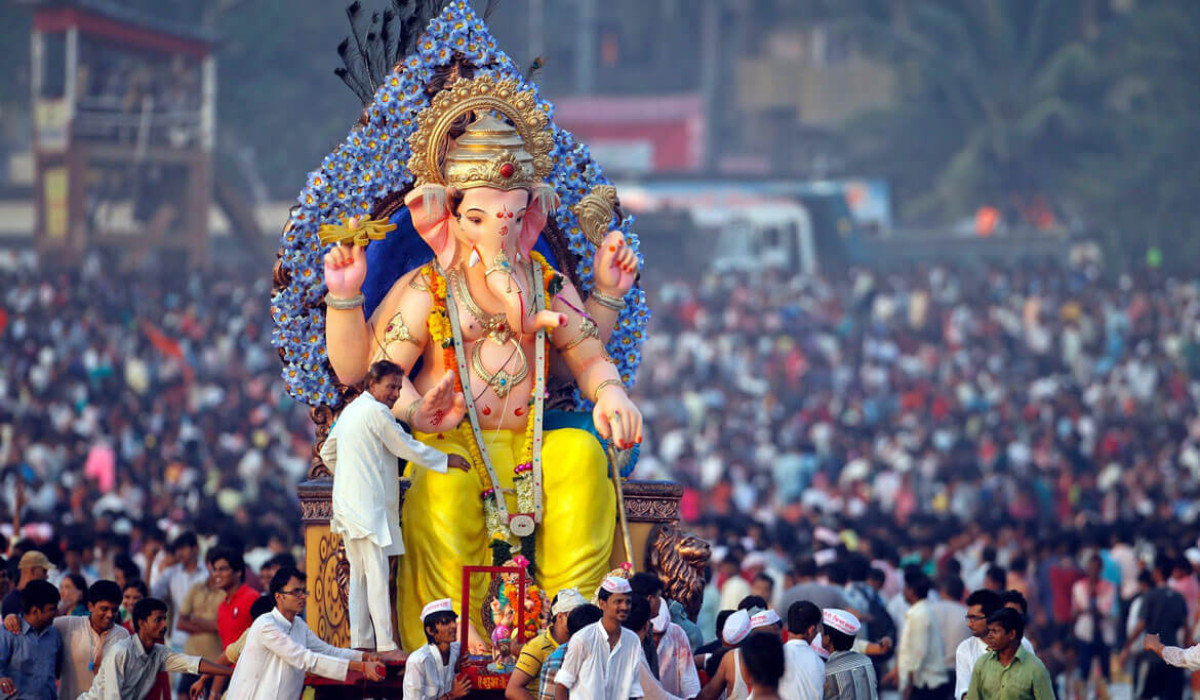
Honoring the elephant god Ganesha, the god of wisdom and prosperity, the Ganesh Chaturthi is another important country-wide festival that celebrates his birth.
In some parts of India, it is also known as Vinayak Chaturthi and Ganeshotsav.
Idols of the elephant god are installed at homes and public places on elaborate make-shift stages called Pandals. Vedic hymns from the ancient texts are read aloud. Some people also chose to fast. Blessed food called Prasad is given away to everyone at the Pandals.
The celebrations last ten days and on the last day known as Anant Chaturdashi, idols of Ganesh are released into a body of water (river, sea or lake) in grand processions accompanied by music, drums and hymns. The clay idol dissolves into the water and it is believed that Ganesh returns to his celestial abode.
While Ganesh Chaturthi is celebrated throughout India, the biggest ceremonies are carried out in Maharashtra, Karnataka, Kerala, Telangana, and Tamil Nadu. Unlike most other popular festivals of India which date back centuries, this festival is relatively recent and is traced back to the legendary Indian nationalist and leader Bal Gangadhar Tilak in 1893 AD.
It is celebrated in the Bhadra month of the Hindu calendar which falls in the mid-August to September.
The Best Places to Celebrate Ganesh Chaturthi in India
Mumbai is the place to be for the Ganesh Chaturthi celebrations. It is estimated that every year some 150,000 Ganesh clay statues are immersed into the Indian Ocean as part of the celebrations.
7. PONGAL: THE BOUNTY OF THE HARVEST IN THE INDIAN SOUTH
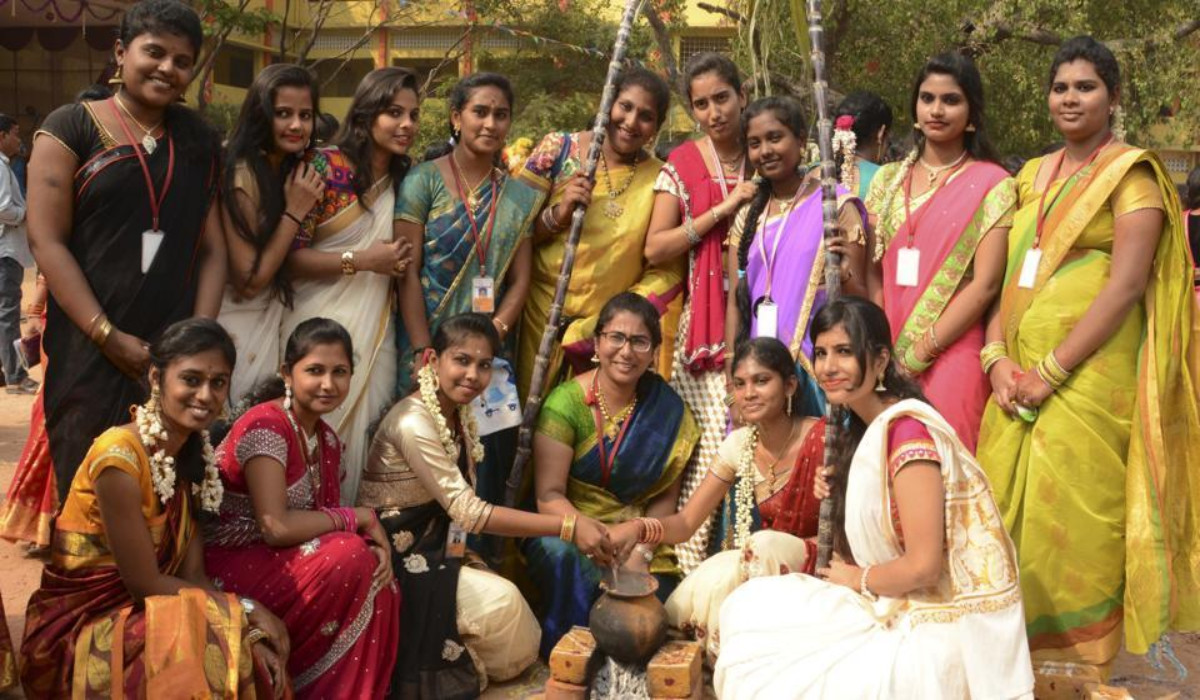
Dedicated to the sun god Surya, the harvest festival of Pongal is celebrated by the Tamils of India and Sri Lanka and usually falls on the 14th or 15th of January as per the Tamil solar calendar depending upon the sun’s orbit.
The three days of the festival are known as Bhogi Pongal, Surya Pongal, and Mattu Pongal.
Pongal marks the end of the winter solstice and the start of the six-month-long journey northwards of the sun into the Uttarayana (Capricorn) at the beginning of the Tamil month of Thai.
The word Pongal in Tamil means “to overflow” and refers to a delicious dish of the same name made from jaggery (raw sugar) and rice boiled in milk.
The dish is offered to the gods and goddesses first, including the sun god Surya and then the entire community feasts on Pongal.
On the first day, the Bhogi Pongal, people decorate their houses, discard the old and unnecessary items from their houses to welcome a new beginning and light bonfires in front of their houses.
On the second day called Surya Pongal, the most important day of the festival, blessings of the sun god Surya are invoked through prayers and rituals. The day begins with an oil bath and culminates with the feasting of Pongal.
The last day, Mattu Pongal is marked for honoring cows which are considered sacred creatures in the Hindu tradition. They are bathed, their horns polished and they are garlanded with flowers.
If you are in the south of India in January — which is the best time to be in the region — partaking in Pongal celebrations offers you an unforgettable cultural experience.
States in South India that are famed for Pongal are Tamil Nadu, Karnataka, Kerala, Andhra Pradesh, Puducherry, and Telangana.
The Best Places to Celebrate Pongal in India
The temple towns of Tanjore, Madurai and Trichy are best Tamil Nadu places to partake in the merrymaking of Pongal.
8. DURGA PUJA: HONORING THE MOTHER OF GODS
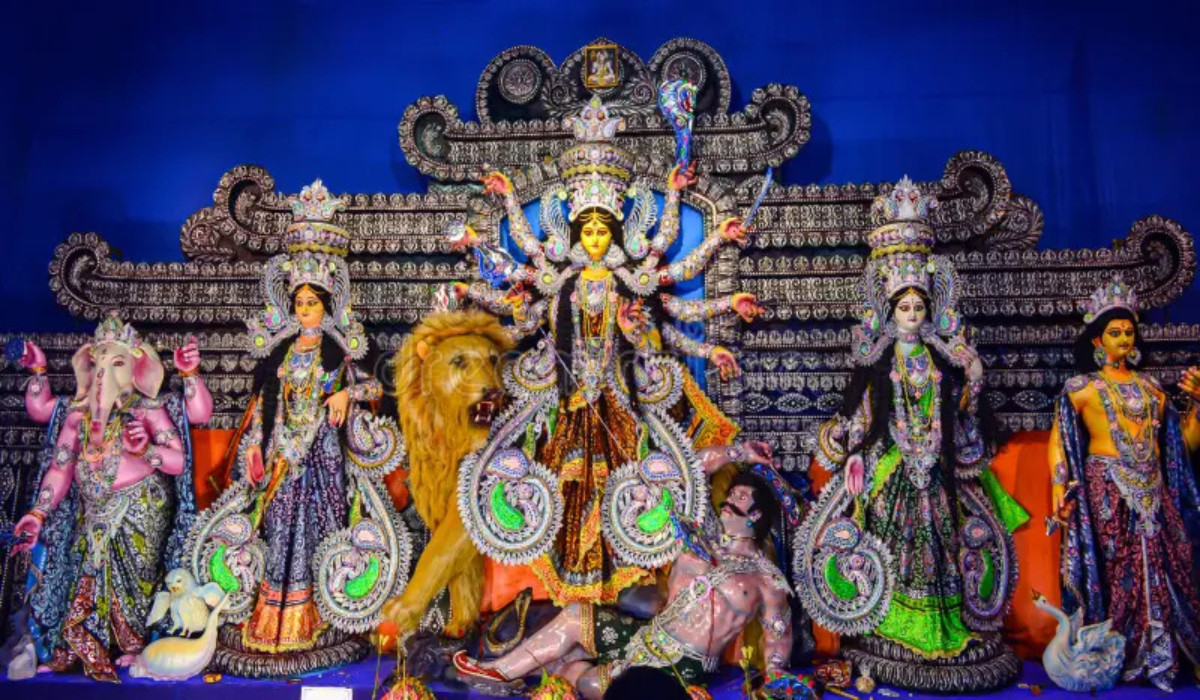
Dedicated to the goddess Durga who is known as a Mahadevi, mother of the gods, the Durga Puja festival —which falls in the month of Ashwin (September-October)—celebrates Durga’s triumph over the treacherous face-shifting demon Mahishasura.
While Durga Puja is celebrated throughout India, the regions of India it is most famous for include West Bengal, Bihar, Assam, Tripura, Odisha, Jharkhand and Uttar Pradesh. The festivity lasts for 10 days and is a great time to be in this part of India.
Puja (prayer sessions) are performed in homes and in public on elaborate special-purpose stages called Pandals. Hymns and verses are read out from the ancient scriptures, gifts are given out to family and friends and feasts are prepared.
The Durga Puja is an important part of what is considered the Shaktism strain of Hinduism. The Durga Poha in Kolkata has been anointed by UNESCO as the “Intangible Cultural Heritage” of mankind.
It is important to mark that the Durga Puja festival of the Shaktism tradition coincides with the Dussehra and Navaratri celebrations of other strains of Hinduism.
The primary deity at the center of the ceremonies is the mother goddess Durga but other deities like Saraswati (the goddess of knowledge and music), Ganesha (the god of good beginnings), Kartikeya (the god of war) and Lakshmi (the goddess of wealth and prosperity) are also honored.
The Best Places to Celebrate Durga Puja in India
Kolkata. There is no other place you’d rather be for Durga Puja.
9. ONAM: KERALA EXTRAVAGANZA
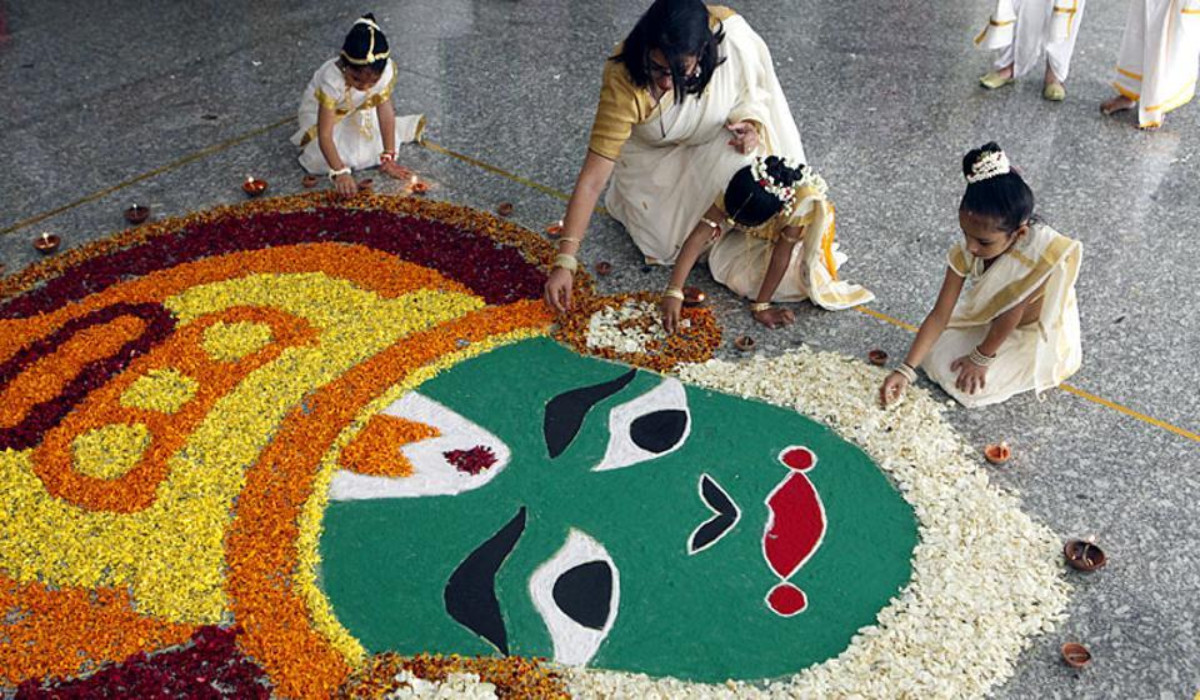
Onam is the official festival of the South Indian state of Kerala, “God’s own country.”
Commemorating the mythical King Mahabali, Onam is celebrated by the people of Kerala in remembrance of the glorious reign of the kind king of Kerala.
According to the legend, the gods and goddesses were so envious of Mahabali’s popularity that they conspired to bring him down and put an end to his rule.
Onam falls in the first month of the Malayalam calendar called Chingam which corresponds to August-September and lasts over 10 days.
The main celebration, known as Thiruvonam Day, is held on the second day. Onam features traditional dances, sports competitions, boat races, martial arts, cultural programs and Kathakali performances.
Onam begins with a parade called Athachamayam featuring grand processions led by elaborately decorated elephants. The Vishnu temple at Kochi called Thrikkakara Temple is the center of the Onam celebrations. It is considered to be the celestial abode of the great king Mahabali. A ceremonial flag is raised.
The Best Places to Celebrate Onam
The Onam is a great time to be in Kerala. Best places to celebrate Onam are Cochin and Trivandrum.
10. GURPURAB: CELEBRATING THE LIFE OF GURU NANAK
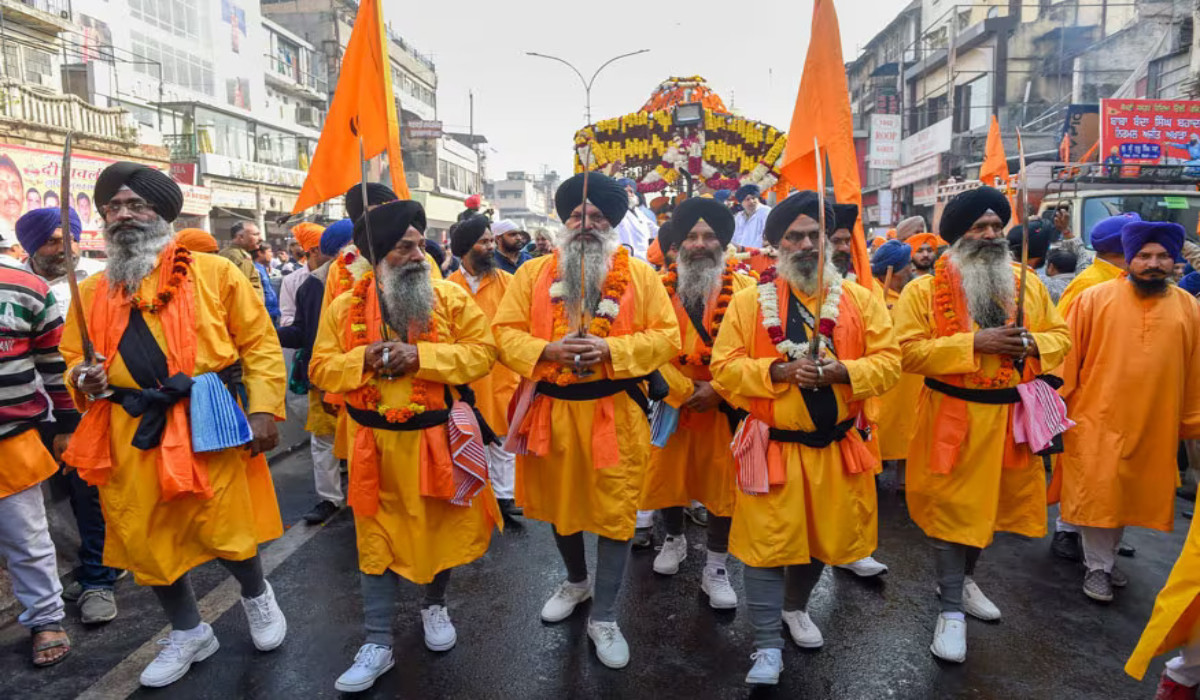
Gurpurab or birth anniversaries of the 10 Gurus of Sikhism are considered important events of the Sikh faith.
The most important of these anniversaries is the Guru Nanak Dev Ji Gurpurab, which celebrates the birth of Sikhism’s founder Guru Nanak who is believed to have been born in 1469 AD.
Gurpurab of Baba Nanak is a national holiday in India and is considered one of the holiest festivals in India. It is celebrated in month of Kartik (November) on the full moon day, Kartik Purnima.
The day begins with the chanting of early morning processions called Prabhat Pheris wherein believers in chant hymns from the holy scripture Guru Granth Sahib.
The processions also feature the Sikh Flag Nishan Sahib, the Palki (holy palanquin of the scripture Guru Granth Sahib), playing of holy tunes by brass bands and are followed by performances from the Sikh martial arts tradition called the Gatka. Gurdwaras all across India hold two days long non-stop reading of this scripture before the Gurpurab.
The Best Places to Celebrate Gurpurab in India
Best places to celebrate the birth anniversary of Baba Guru Nanak are the Punjabi cities of Amritsar and Chandigarh.
Here are our honorable mentions.
11. SHRI KRISHNA JANMASHTAMI: A CELEBRATION OF KRISHNA’S BIRTH
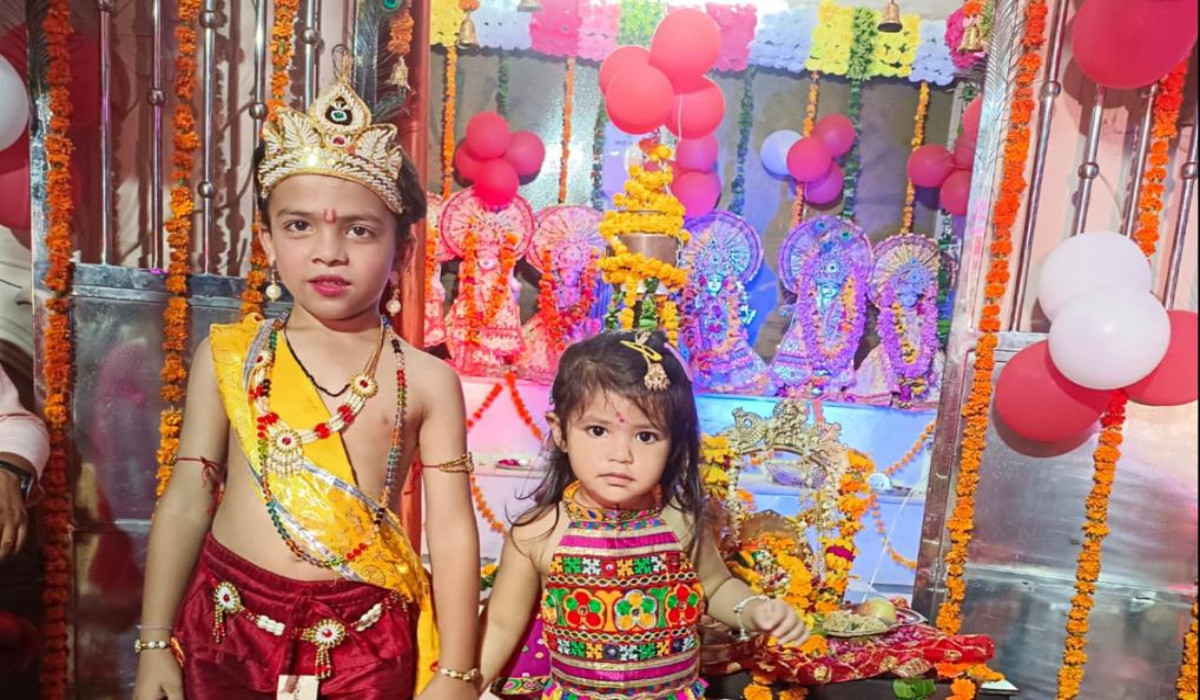
Janmashtami is the Sanskrit word for an anniversary. Shri Krishna Janmashtami is the celebration of Lord Krishna.
It is typically celebrated on the eighth day in the month of Bhadrapada (August-September) as per the Luni-Solar calendar. The number 8 is significant as Krishna was the eighth child of his mother Devaki and because Lord Krishna is considered the eighth avatar of Lord Vishnu.
The event is also known as Krishna Jayanti or Gokulashtami. Since the birth of Krishna is believed to have taken place at midnight, the celebration peak at this auspicious hour.
As per legend Krishna was born in Mathura, now a small town in the state of Utter Pradesh to mother Devaki and Vasudeva. The family was however kept captive in a prison cell by the villainous broth of Devaki, King Kansa.
The life of lord Krishna is one of the most documented lives of any gods in the Hindu tradition.
The Bhagavad Gita gives detailed accounts of his birth, childhood, his mischievous and playful nature, and his subsequent struggle against forces of darkness and evil.
The highlight of celebrations is the Dahi Handi or Gopalakala events where young men form a human pyramid to reach and break a pot (handi) filled with butter or curd which is suspended at a considerable height.
This event is meant to replicate Krishna’s playful nature and to forge a sense of unity, teamwork, and collective effort among the believers.
The Best Places to Celebrate Krishna Janmashtami
Mathura and Vrindavan (also known as Brindaban), where Krishna is believed to have been born and spent his formative years and early youth are the center of the festivities.
12. MAKAR SANKRANTI: THE JOYOUS KITE FLYING FESTIVAL
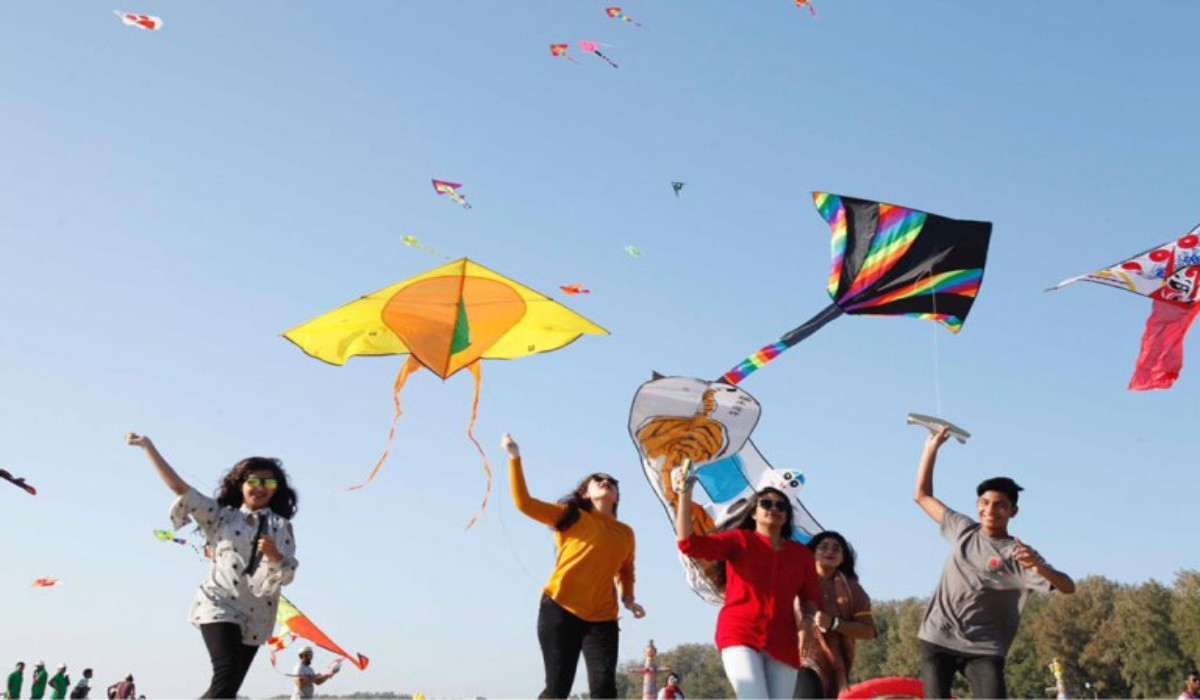
Known by various regional names like Uttarayana, Magha, Til Sakraat, Mela, Bhogi, and others, the Makar Sankranti, dedicated to the sun god Surya, marks the transition of the sun from the Dhanu (Sagittarius) to Makara (Capricorn).
Originally, it is a harvest festival, which is meant to invoke the blessing of Surya for a good harvest after the lapse of the winter and the end of the winter solstice.
Marking the onset of spring, it usually falls on the 14th of January each year. It is also one of the very few festivals that follows the solar calendar. Most Indian festivals are based around the Luni-Solar Hindu calendar.
The Makar Sankranti is a time of rejoicing, merrymaking, thanksgiving and burying old grudges.
In recent times, kite flying as a way of entertainment has emerged as a significant part of the festival and young people particularly enjoy kite flying competitions.
Another important part of the festival is the preparation of a sweet dish called Tilgul made from sesame seeds and jaggery. Bonfires at night and holy dips in sacred rivers of Ganges, Yamuna and Godavari are also important rituals of the festival.
The Best Places for Makar Sankranti
The best places to enjoy this festival in India are Ahmedabad and Vadodara (Gujarat), Jaipur and Jodhpur (Rajasthan), Amritsar (Punjab), Karnataka, Haridwar (Uttarakhand) and Guwahati (Assam).
FREQUENTLY ASKED QUESTIONS ABOUT FESTIVALS IN INDIA
Which is the no 1 festival in India?
Diwali is arguably the biggest festival in India. Also known as Deepawali in some parts, Diwali is not restricted to any one region of India and is celebrated with tremendous zest and zeal all across the nation.
Celebrating the triumph of good over evil and light over darkness, oil lamps called Diyas are lit to mark the occasion, on account of which it is also known as the “festival of lights.”
How do you explain Diwali to a foreigner?
Diwali is one of the primary festivals in the Hindu faith. In a land of festivals, fairs, and seasonal merrymaking like Holi, Dussehra, Navaratri and Eid, Diwali is the grandest of all Indian celebrations.
Celebrations of Diwali span over five days. It is a celebration of good over evil. Oil lamps called Diyas are lit outside houses and in streets. These Diyas symbolize Light and earns the festival the moniker, the “Festival of Lights.”
Diwali is celebrated in the Hindu month of Kartika (which falls between mid October and mid November on the Gregorian calendar).
Another important belief around Diwali is that when Lord Rama returned to Ayodhya after beating the demon king Ravana, he is believed to have spent 14 days in the city where the inhabitants welcomed him by lighting lamps in his honor.
Is Diwali as big as Christmas?
Yes. Diwali is to India what Christmas is to the Western World. All of India comes together to celebrate this grand festival.
Which are the two main Indian festivals?
Diwali and Holi are considered two of the biggest festivals in India.
The Festival of Lights Diwali, which is celebrated in the fall season, is dedicated to Lord Rama and marks the triumph of good over evil and light over darkness with the lighting of diyas (oil lamps) and five-day-long celebrations.
The Festival of Colors, Holi, is celebrated at start of spring and is a celebration of the divine love story of Lord Krishna and the goddess Radha.
What is the biggest Indian holiday?
Diwali is considered to be the biggest festival in India.
 Skip to main content
Skip to footer
Skip to main content
Skip to footer
